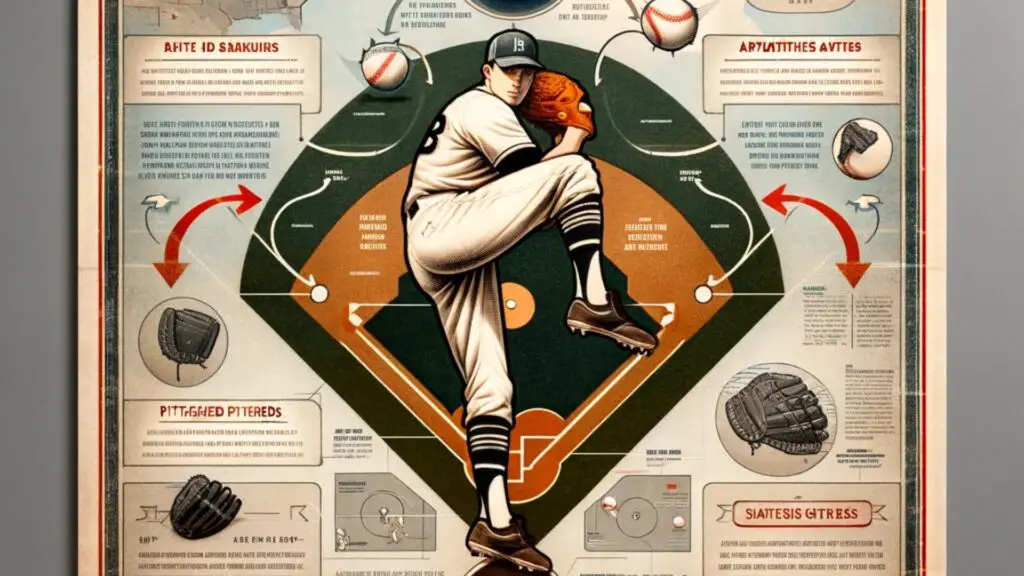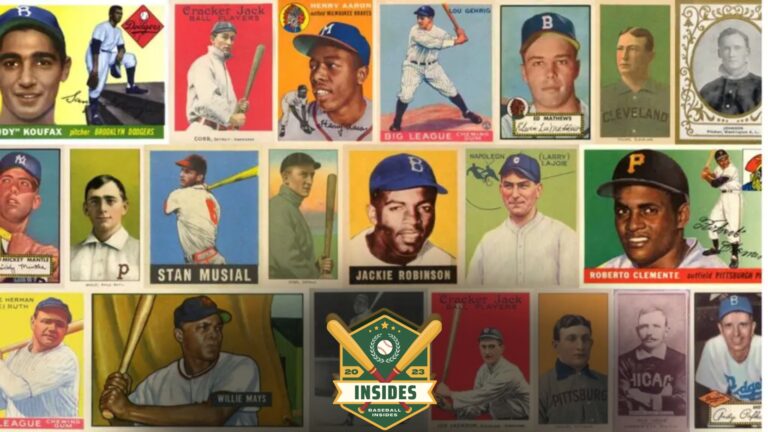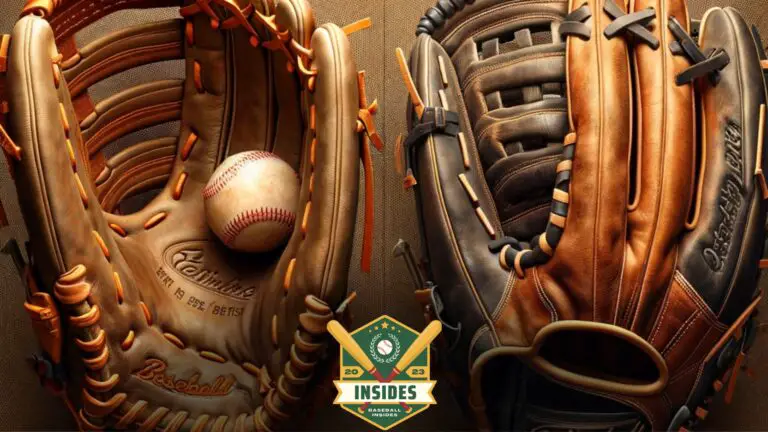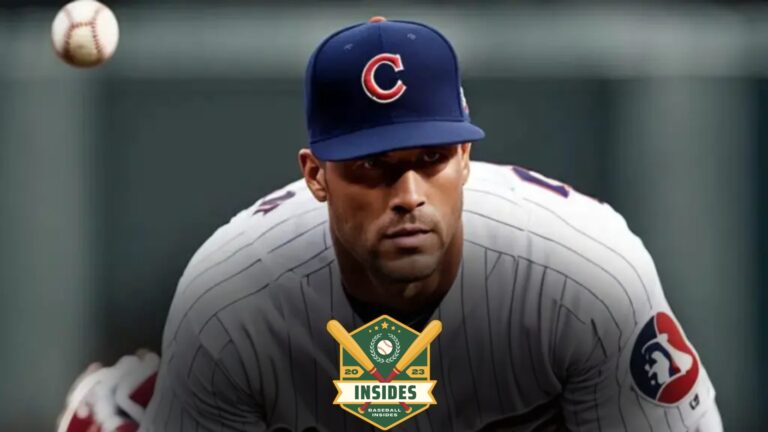
In this article:
When it comes to the world of baseball, acronyms and abbreviations are thrown around like fastballs on the mound.
One such abbreviation that frequently pops up is RHP. Have you ever wondered, “What does RHP mean in baseball?” Look no further because we’re here to shed some light on the subject.
RHP, or right-handed pitcher, is a term used to describe a specific baseball pitcher type. It signifies that the player throws or pitches using their right hand.
In the dynamic world of baseball, where strategy and precision are paramount, understanding the characteristics of different pitchers is crucial.
In contrast to RHP, we have LHP, which stands for a left-handed pitcher. As they are sometimes called, these southpaws utilize their left hand when pitching.
The distinction between right-handed and left-handed pitchers brings an interesting dynamic to the game, impacting the strategy and matchups between hitters and pitchers.
In this article, we will delve deeper into the realm of RHP in baseball, exploring its significance, role, and how it influences the game.
So, let’s step up to the plate and unlock the mystery behind RHP in the exciting world of baseball.
The Role of RHP in Baseball
The right-handed pitcher is a key figure in baseball’s grand symphony. These talented individuals hold a unique place on the diamond, their skills finely tuned to deliver the perfect pitch and confound the opposing batters.
Let’s dive into the mesmerizing world of RHPs and uncover their crucial role in the game.
Picture this: a batter steps up to the plate, their eyes fixed on the RHP on the mound. With a powerful windup and a lightning-quick release, the RHP unleashes a fastball that seems to defy gravity, hurtling towards home plate with precision. The batter swings with all their might, but it’s too late. Strike one!
As an RHP, their primary objective is to dominate the game through their exceptional pitching prowess.
Their right arm becomes a weapon, capable of firing fastballs, curveballs, sliders, and change-ups, each designed to deceive, mesmerize, and ultimately conquer the batter’s will.
But the role of the RHP goes beyond simply throwing pitches. They are the game commanders, dictating the flow and tempo, strategizing every move with their catcher.
They must analyze the batter’s weaknesses, exploit their tendencies, and choose the perfect pitch to exploit their vulnerabilities. It’s a delicate balance of power, skill, and cunning.
One of the RHP’s most intriguing aspects is their ability to neutralize right-handed hitters. With the natural advantage of pitching from the right side, RHPs can exploit the weaknesses in a right-handed batter’s swing.
They can bring the heat with a blazing fastball on the inner half of the plate, making it nearly impossible for the batter to connect. It’s a mesmerizing battle of wills, a clash between pitcher and batter that keeps fans on the edge of their seats.
The impact of RHPs extends beyond individual at-bats. They play a pivotal role in pitching rotations, acting as the stalwarts of their team’s starting lineup.
Their ability to consistently deliver quality starts provides stability and reliability, setting the tone for the game and allowing their team to strategize accordingly.
While discussing the roles of a Right-Handed Pitcher (RHP) in baseball, it’s fascinating to consider the broader team composition and ask, how many baseball players are on a team? This question uncovers the strategic depth behind team selection and player roles.
The Skills and Qualities of an RHP
A right-handed pitcher (RHP) in baseball requires specific skills and qualities to excel on the mound. Here are some key attributes that contribute to the success of an RHP:
- Strong Arm: An RHP needs to possess a powerful and accurate throwing arm to deliver pitches with velocity and precision. This allows them to challenge hitters and hit their spots effectively.
- Pitch Repertoire: A diverse arsenal of pitches is crucial for an RHP. They should have a mix of fastballs (four-seam, two-seam), breaking balls (curveball, slider), and changeups. The ability to command and vary the movement of these pitches keeps hitters off balance.
- Control and Command: Consistent control over pitches is essential to limit walks and keep the ball in the strike zone. Additionally, locating pitches within the strike zone is crucial to induce weak contact or strikeouts.
- Mental Toughness: Baseball can be a mentally challenging game, especially for pitchers. An RHP needs to remain composed and confident in high-pressure situations. They must possess the mental fortitude to bounce back from adversity and adjust when facing tough lineups.
- Competitive Nature: RHPs must possess a competitive drive and a strong desire to win. This motivates them to work hard, improve their skills, and strive for excellence.
- Physical Conditioning: Pitching requires significant physical strength and endurance. RHPs should focus on building their core strength, shoulder stability, and overall conditioning to maintain performance and prevent injuries.
- Analytical Mindset: RHPs must study and analyze opposing hitters’ tendencies to exploit weaknesses. This involves reviewing game footage and scouting reports and understanding the strategic aspects of pitching.
By combining these skills and qualities, an RHP can become a formidable baseball force capable of dominating opposing hitters and contributing to their team’s success.
Understanding the importance of a Right-Handed Pitcher (RHP) in baseball brings us to another intriguing aspect of the game: what is a hold in baseball? This statistic is crucial for evaluating the effectiveness of pitchers, especially those who enter the game in critical situations.
Famous RHPs in Baseball History
Throughout baseball’s storied history, numerous right-handed pitchers (RHPs) have left an indelible mark on the game. These remarkable individuals have displayed exceptional skill and dominance on the mound and have become icons of the sport.
One of the most celebrated RHPs in baseball history is Walter Johnson. Known as “The Big Train,” Johnson played for the Washington Senators from 1907 to 1927.
With his blazing fastball and impeccable control, Johnson recorded a staggering 417 wins, including 110 shutouts, which are still unmatched records in the modern era.
Another legendary RHP is Cy Young, for whom the prestigious pitching award is named. Young enjoyed a remarkable career spanning from 1890 to 1911, amassing an astonishing 511 wins, the most in baseball history.
His durability and consistency made him a force to be reckoned with, and he remains an enduring symbol of excellence on the mound.
Bob Gibson, who played for the St. Louis Cardinals from 1959 to 1975, is widely regarded as one of the most dominant pitchers ever. Known for his fierce competitiveness and intimidating presence, Gibson recorded a career ERA of 2.91 and earned two Cy Young Awards and numerous other accolades.
Other notable RHPs in baseball history include Greg Maddux, Roger Clemens, Tom Seaver, and Pedro Martinez, each with unique contributions to the game.
These iconic RHPs have left an indelible legacy, inspiring future generations of pitchers to strive for greatness and etch their names in the annals of baseball history.
RHP vs. LHP: A Comparative Analysis
When it comes to baseball, one of the most intriguing matchups is between right-handed pitchers (RHP) and left-handed pitchers (LHP).
This comparative analysis explores the unique aspects of each pitcher’s approach, their advantages and challenges, and the strategies hitters employ to counter them.
Right-handed pitchers, most in baseball, are accustomed to facing right-handed batters more frequently. Their natural advantage lies in that pitches like sliders and curves tend to break away from right-handed batters, making them harder to hit.
Additionally, RHPs often have an advantage when it comes to pickoff moves to first base, as their throwing motion is more conducive to catching runners off guard.
On the other hand, left-handed pitchers bring a different dynamic to the game. Due to their relative rarity, left-handed pitchers can challenge batters, as their delivery and angles differ from what most hitters are used to.
This difference in angle can make it difficult for left-handed hitters to pick up the ball, as the ball appears to be coming from behind them. LHPs also can neutralize left-handed hitters, who typically have an advantage against right-handed pitching.
Hitters often employ different strategies when facing RHPs and LHPs. Against right-handed pitchers, hitters may try to take advantage of their breaking pitches by looking for fastballs early in the count.
Against left-handed pitchers, hitters may try to focus on hitting to the opposite field, as the ball tends to move in that direction naturally.
Additionally, hitters facing LHPs may employ a more patient approach, as left-handed pitchers can be prone to wildness or struggle with command.
How Do Right-handed Pitchers Stand Out?
Right-handed pitchers in baseball often stand out due to their unique skill set and strategic advantages. Here are some ways in which right-handed pitchers distinguish themselves in the game:
Dominance Against Right-handed Hitters
Since most hitters are right-handed, right-handed pitchers have a natural advantage. Their pitches, such as fastballs and sliders, break away from right-handed batters, making it more difficult for them to make solid contact.
Different Pitch Movement
Right-handed pitchers have a natural tendency for their pitches to move away from right-handed batters and toward left-handed batters. This creates variation in pitch movement and makes it harder for batters to anticipate the ball’s trajectory.
Pitching Matchups
Right-handed pitchers often have an advantage in certain matchups against right-handed heavy lineups. Coaches strategically use right-handed pitchers to neutralize powerful right-handed hitters by exploiting their weaknesses, such as pitching inside or utilizing breaking balls.
Pickoff Moves
Right-handed pitchers have an advantage when it comes to pickoff moves to first base. Being right-handed allows them to face the runner more easily, making it harder for baserunners to steal bases.
Positional Flexibility
Right-handed pitchers can be versatile in their roles. They can start games, become relief pitchers, or be effective in specialized situations, such as closing out games. Their adaptability makes them valuable assets to their teams.
As we delve into the significance of the RHP in baseball dynamics, it’s also interesting to explore equipment choices at different levels of play, leading us to ponder, why does Little League use aluminum bats? This choice affects playing style and strategy, offering a unique perspective on the game’s nuances.
How Do Left-handed Pitchers Stand Out?
Left-handed pitchers bring a unique advantage to baseball, making them stand out in several ways.
First and foremost, their throwing motion and arm angle are naturally deceptive for right-handed batters, as they are less accustomed to facing left-handed pitching.
This gives lefties an inherent advantage in creating difficulties for hitters, resulting in more strikeouts and weaker contact.
Additionally, left-handed pitchers have an advantage when holding runners on base. As most players are right-handed, it is typically more challenging to steal bases against lefties due to their ability to see better and monitor the runner.
Left-handed pitchers can use their pickoff moves effectively and quicken their delivery to keep base runners in check.
Furthermore, the natural movement of a left-handed pitcher’s pitches, such as the fastball, curveball, and slider, tends to break away from right-handed hitters.
This break, known as “glove-side movement,” can make it challenging for right-handed batters to make solid contact, resulting in more swings and misses or weakly hit balls.
Left-handed pitchers also contribute to the diversity of a pitching staff, as most pitchers are right-handed. This can give a team a strategic advantage by providing a different look and changing the hitter’s perspective.
A left-handed pitcher in the rotation or bullpen adds versatility to a team’s pitching options, making it more difficult for opposing teams to plan their lineups accordingly.
See Also: What Does 6 4 3 Mean In Baseball

Conclusion
In conclusion, RHP stands for “right-handed pitcher” in baseball. A right-handed pitcher is a player who throws the baseball with their right hand.
In baseball, the term RHP is commonly used to categorize and differentiate between pitchers based on their throwing hand.
This designation is important because it helps teams and fans understand the dynamics and strategies involved in the game. Right-handed pitchers bring unique skills and pitching styles to the field, making them an integral part of any baseball team. Their contributions often play a crucial role in the success of the team’s pitching staff.






